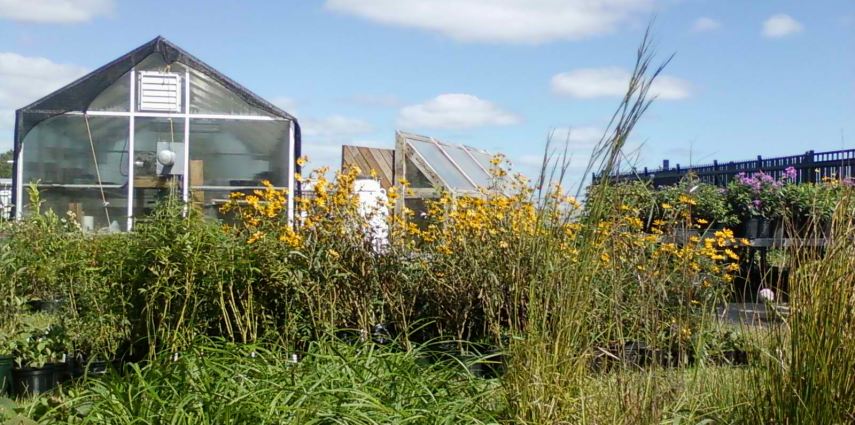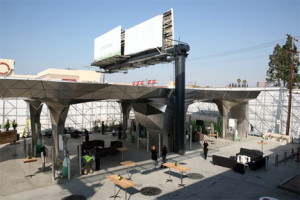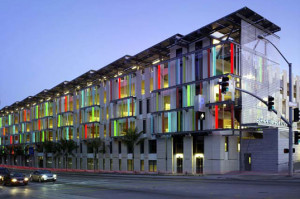Not your typical ‘Green’ Landscape Design
You must be careful when shopping for landscape design contractors in the New York area in particular. The ‘green’ and ‘sustainable’ fakers are a dime a dozen! If you are wondering how you might detect or confer a true values-based approach to cleaner, more environmentally-sound building practices verses the just-for-show ‘green’ building-light that plagues the market, you are not alone. I hope to delve in a bit deeper and answer some of your questions in the remainder of this post.
Natural Garden Landscape Design & Build: Intention
Natural Garden Landscape Design & Build is a New York based landscape design and build company based in Brooklyn, NY. We specialize in custom NYC rooftop garden construction, brownstone and townhouse backyard landscaping, community building, and landscape design. We are focused on implementing natural building materials and natural building techniques in modern urban garden environments. We focus our work in Brooklyn and NYC, but will travel the Eastern seaboard for interesting projects. My name is Craig Desmond and I am the owner and lead carpenter, and I have been refining the company’s mission and working towards it for over ten years. My background is in sustainability, carpentry, horticulture and landscape design. It is my intention with this blog to share my insight on the ‘green’ building industry, particularly the landscape design branch, and to challenge other NYC ‘green’ landscaping architecture firms, Brooklyn eco-friendly gardening companies, and sustainable construction and hardscape contractors in the industry to step their games up. I hope they (you) are reading! I plan to post only on what I know well, and also on the direction I would like to see this and other design and construction industries moving in. I am particularly interested in and focused on natural building, landscape design, garden construction, locally sourced lumber, responsible forestry, adaptive reuse, deconstruction, salvaged building materials, environmental justice, ecology, and community development. For now, I am focused on designing and building garden spaces and community building projects in Brooklyn and NYC to the best of my ability, and sharing what I learn on this Blog. Some day, I hope that my portfolio of completed projects will reflect all of my deepest values and brightest visions for the future. Whether you are a potential customer, competitor looking for an edge, or fellow student of designing and building for the future; welcome, I hope you find value in my posts.
You might scan this article for what you are looking for, as I will continue to cover some of the ‘green’ building 101 fundamentals for starters.
Somewhere along the way, people began to accept that ‘green’ means environmental. Products and services could soon be advertised as ‘green’ without any possible way to prove their arbitrary ‘green’ness. ‘Greenwashing’ is a term coined for this often exploited loop hole: ‘green’ marketing lacks metrics. While there is plenty of well intentioned ‘green’ activity out there, the term ‘green’ can be problematic; even after the establishment of certification programs and ranking systems.
The term sustainable is probably a better choice for describing environmental products and services. Sustainability, however, is very difficult to attain, and just like ‘green,’ even harder to quantify. It is an ideal. It is much easier to say something is ‘green,’ than to say it is sustainable because ‘green’ is so loosely defined compared to sustainability, which has several hard-line definitions and metrics. Unfortunately the term sustainable has gone the way of ‘green,’ all but losing its value due to its diluted overuse. In discussions of real progress towards healthier building practices for the people, the planet and economies worldwide, it is becoming more and more of a reality that those in-the-know avoid throwing the term sustainability around as much as they avoid saying ‘green’ or ‘eco-anything.’
If a general contracting firm, architecture firm, construction company, landscape designer, or independent contractor claims to be a sustainable building company, an eco-conscious contracting firm, a green builder, or any other catch-phrase that seems to express ecological sensibilities, ask yourself if their work alone stands for social and environmental values, without the unquantifiable qualifiers of green or sustainable etc.
Some things to look for as an informed customer or concerned steward of the planet are:
- the extent of the company’s efforts for responsible building materials sourcing,
- the intended functionality of their projects,
- a commitment to craftsmanship and respect for seeing the building materials implemented in their longest lasting role,
- consideration for the life-cycle impacts of their projects and practices,
- incorporation of community in their regular routines,
- job-creation both with company growth AND ancillary market creation,
- transparency of trade-secrets and willingness to share their most ‘sustainable’ practices with others,
- worker consideration,
- considerations for local flora and fauna.
Obviously these types of things sound a lot harder to accomplish or to make routine than to simply say that one is a sustainable company, that the company has sustainable options available, or that ‘green’ building materials are in-use.
A Special Note on ‘Greenwashing’ in Landscape Design and Architecture
You may have heard of the pitfalls of ‘greenwashing’ in marketing related to any industry, and the fact is that every market is susceptible to this vague and misleading marketing scheme; landscape design companies in Brooklyn and NYC are no exception. Landscaping and garden construction is a particularly vulnerable market to greenwashing for several key reasons. Mainly, gardening and landscaping are at face-value a gateway into the natural world with the basic incorporation of outdoor space, plants, organic matter, outdoor living spaces, natural lighting etc. A clever marketing professional could sell you a certified ‘green’ garden just based on these given features of any outdoor space! The ‘greenest’ garden space is one that nobody has ever built a thing on! With this in mind, it would make more sense for landscape designers and garden construction companies to talk about their minimal impact on natural spaces or their remediation of environmentally damaged spaces vs. marketing their services based on the benefits of their green or sustainable construction impacts.
How do I talk about socially and ecologically conscious landscape design or building in general?
I believe that a method of moving towards cleaner building practices, better and more jobs for construction workers and industry workers, sane forestry practices, and a healthier economy require that we move away from mechanized industrial practices. To move into the future in a way that makes sense is to look towards the past, taking the best from the modern world and the ancient world, across history. To be building in accordance with natural cycles, we should be reviving the highest quality time-honored building traditions, as well as adapting the latest in technological advancements, efficiencies, and biological research. Building practices are a primal and fundamental component of what makes us human. Anthropologists glean a large portion of their research and knowledge based largely on their findings of human settlements and building practices. Across time and cultures, building practices reflect the values of societies. What values do our building practices give away about us? What types of materials do we use in modern schools and homes? Where do those building materials come from? WHO is doing the building, and why them? Is the quality of our modern construction getting better or worse? Why do old homes last longer than new ones? Do we align our buildings with the sun or the stars? Why would we? These questions might make you stir in your seat. They certainly weigh heavily on my mind every day. I believe that carpentry and construction can and should serve society as case studies in sustainability; to open more people’s minds to not what sustainability is, but on the realities of what is unsustainable and insatiable, and why? My course of action to express and defend my perspective is to focus for now on winnable battles, in landscape design, by designing and building landscapes and gardens that represent my values. I will not ever talk about the sustainable or green components of my work. I will transparently reveal where my impacts are too heavy, the values my work reflects, and my efforts to have integrity to a value system that requires constant improvement and effort to reach for. Throughout the course of this blog I hope to explain my views and emphasize these values in much more detail, and then back them up with action, completed projects, and constant improvements.
A future that is healthier for the environment, better for people, and revives thriving local economies requires that we move back to a time when the power, the resources, and the tools of success were in the hands of the people, and not massive industry giants who tighten their reigns by creating regulations and barriers to entry.
Energy efficiency, LEED certification, Green, Platinum, Gold OH MY!;
What is ‘Green’ Building Anyways??
It depends on who you ask.
In 2010, I had the opportunity to sit down with Leadership in Energy and Environmental Design (LEED) Founding Chairman Rob Watson. I had only one question for him: “Do you think there is a downside to the fact that the LEED rating system is the only widely accepted measure for ‘green’ building?” (At the time it was the only widely recognized system, however, now, there are others that have emerged as leaders in the ranking industry.) As if insulted that I would suggest that his system could possibly have a downside, never mind any flaws, Mr. Watson half laughed, and half scoffed before retorting,
“Let me just put it this way, anyone who tells you they are building green without using the LEED system is blowing smoke up your ass.” – Rob Watson, Founder of LEED
So there you have it, scoring LEED points and gaining a LEED certification is not just the only way to measure ‘green’ building, it is the only way to build ‘green’; that is if you ask Rob Watson.
The LEED system certainly has its merits. Their approach is essentially one of energy and building material efficiency. Energy efficient buildings are crucial to lowering energy consumption. LEED certified buildings have brought great attention to ‘green’ building, and it is getting cheaper and easier to employ LEED certified building methods. I believe that streamlining the LEED style ‘green’ building process, and mass-producing ‘green’ homes and buildings will be actualized within the next decade.
On the surface this sounds like good news, and certainly seems like a step in the right direction. However I believe things are not quite this simple. In fact, after years of academic research on the topic, I am convinced that this is in actuality, a step in the complete wrong direction, and detracts attention away from the work that needs to be done in changing how we build, and the values our construction needs to reflect. Do not get me wrong, more energy efficient buildings are a good thing, but when you consider how technology has advanced in recent decades, buildings should be 40 to 50% more efficient than they were at the turn of the last century anyways. Energy efficient building is not ‘green’ or above and beyond the norm, it is just common sense and staying with the times. But OK! LEED certification goes beyond just energy efficiency, so lets give them more of a chance than that.
Rob Watson has a vested interest in the continued implementation, development, and expansion of the LEED system. In more recent years, LEED certification has expanded into the landscape design / architecture and garden construction industry and now welds considerable influence on many of the largest construction sectors globally. At its core, LEED assigns points for very specific building practices and design considerations. Mr. Watson is personally invested in research and development firms, which seek to mass manufacture LEED approved building materials. Building materials that will score more LEED points are generally more efficient, made of renewable components, free of Volatile Organic Compounds, mass manufacturable etc. Seems like a win-win for him, design a ‘green’ building code, and then manufacture and supply the materials that will score the points. Naturally, Rob Watson thinks, claims, and hopes that his LEED building is the only ‘green’ building. To their credit, their system has grown and improved in recent years in both depth of considerations and scope. To also give credit where credit is due, achieving LEED rankings in the silver gold or platinum level requires serious effort! Builders and architects must go to great lengths of trying to do the right thing, use the right materials, consider efficiencies and impacts. I however, am not convinced this is the best thing for the environmentally conscious building industry or movement.
Mass manufacturing and mechanization are the building blocks of industrialization while streamlined fabrication processes and efficiencies of scale are the downfall of small businesses. This is the direction LEED and the U.S. Green Building Council (USGBC) have the ‘green’ building market heading. Within a decade or two, many more people will be living in ‘green’ homes, using less electricity and water. But at what externalized costs to jobs, small construction companies, families, small-scale forestry operations and the greater economy? If a small business can’t afford to go through the LEED accreditation processes, hire LEED accredited architects and purchase small quantities of LEED approved conduit, duct work, water heaters and recycled content composite siding, is the best ‘green’ building they can do to ‘blow smoke up your ass’? Maybe they should just shut down the family business and take a job at Lowes rather than try?
Thankfully, since the time I asked Rob Watson if there was a downside to LEED’s lack of competition, things have changed dramatically in the ‘green’ building arena. Apparently I was not the only one concerned with the direction of ‘green’ building, and the lack of innovation inspiring competition. There are now several ‘green’ building certification models, some more popular than others. There is LEED, Building Research Establishment Environmental Assessment Method (BREEAM), Haute Qualité Environnementale (HQE) and Green Globes to name a few. There are more springing up each day. They all have their own criteria, with a good amount of overlap. While some weigh individual aspects as more important than others, some leave specific criteria completely out of the picture. For all of its elaborate complexity, LEED does not take a buildings intended purpose into account at all. Take a look at this frightening article if you are starting to think that I sound like the crazy one! Yikes!
Never mind a buildings intended purpose, how about ranking a building’s capacity to gentrify. How ‘green’ is a freshly gentrified neighborhood? How pressing this issue is in Brooklyn and NYC neighborhoods! Some newer rating systems are thankfully starting to take social impact into consideration. This is a nice notion, until you delve deeper into how they go about addressing major problems such as gentrification. For example, some ranking systems including LEED now give builders points for adding ‘mixed income’ units into their residential buildings. How can that neighborhood be gentrified now they ask? Sure most units cost $1600/month, but 10% of the units are ‘affordable’ at a very accessible $1200/month. So what if the high-rise was built in a historically poor black neighborhood where average rents were just last week a fraction of those costs, it is mixed income lofts now! Gentrification addressed, socially conscious points awarded, LEED Platinum all the way. Clearly I am being snarky and this is a problem that wears on me and all that I work and stand for.
Mass manufacturing, mechanization, efficiencies of scale; these are not always good things. Home builders associations love them. Home builders associations also love having politicians in their pockets. They both teamed up with banks to set up the housing bubble and market collapse that so far characterize this millennium for the U.S. economy. Why does it start to look like ‘green’ building is the new marketing ploy of business-as-usual for the big dogs? There is much more to this problem, and Rob Watson and his LEED certification machine will not have the last word when history remembers a real Earth Conscious Building Revolution. Can I call that ECBR? How about ECo-BReak-Through. Too much?
“I don’t just blow smoke, I Burn Fire.”
‘Green’ is a marketing term, plain and simple, and unfortunately sustainable is heading down the same path. Be careful when you see a landscape design company or firm tossing these terms around. Look instead for evidence of a values-based approach to conducting business. I earned a degree in sustainability after studying sustainable building and development at The University Of North Carolina at Chapel Hill’s Institute for the Environment. I took my time earning my degree because of my insistence on working as a professional carpenter for ‘green’ home builders and remodelers all the while. Gaining hands-on experience while studying the academic theories was important for me to accomplish before trying to develop my own building values and style. I don’t say all this to boast; I say this to add emphasis to the fact that you will never hear me call my work green or sustainable. The reason is because I can proudly say that I know better. I will only ever call my work what it is. I will surely post more on that later.




